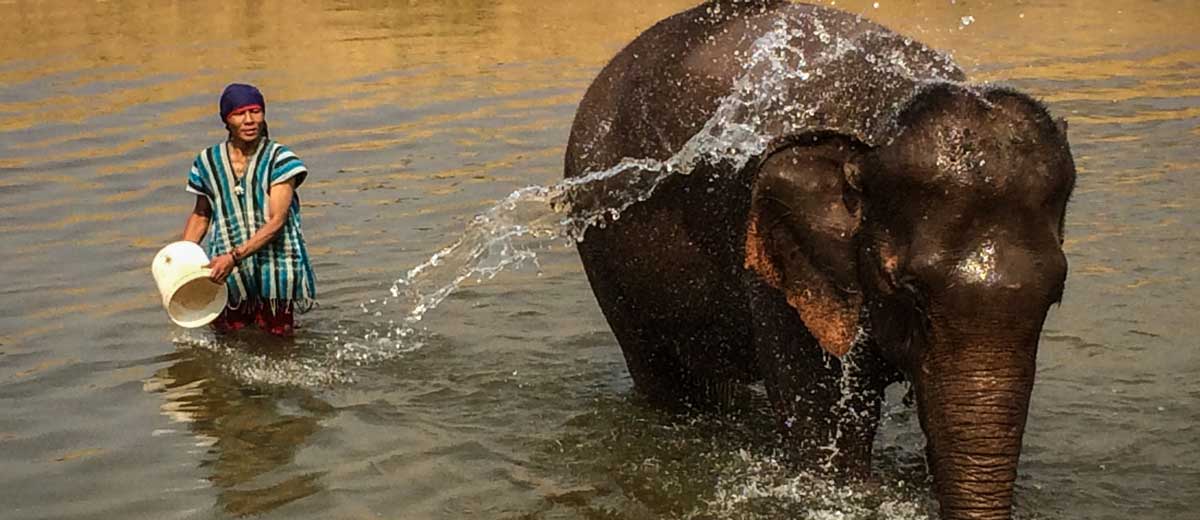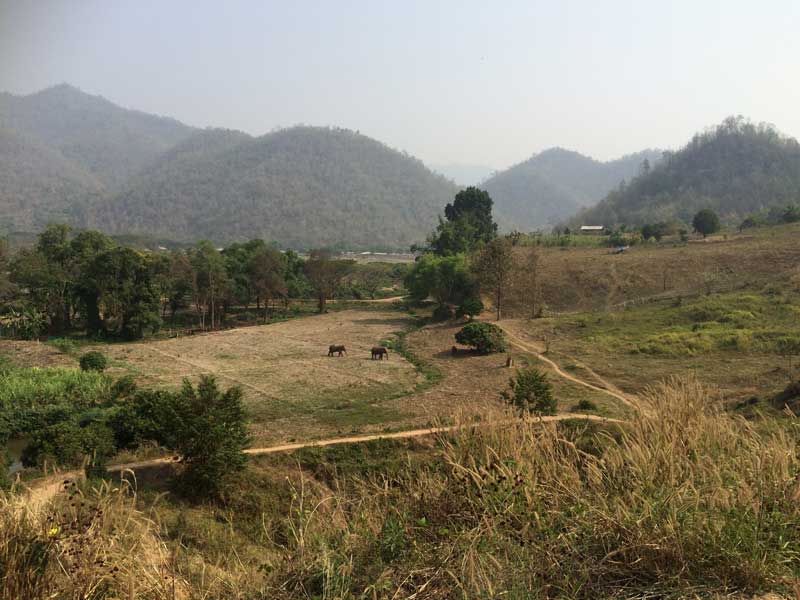The kingdom of Thailand receives between 20 and 30 millions of people every year – which makes Thailand one of the top 10 most visited nations in the world. However, welcoming so many people has considerable impact and creates its own set of challenges – especially towards the sustainability of the natural environment and rich cultural traditions. Luckily, there are ways to minimize tourists’ impact in Thailand.
Thailand has more to offer than just amazing beaches, food, and shopping. There are many amazing opportunities to see the raw natural Thailand in at fantastic national parks, where native wildlife varies from tigers, monkeys and elephants to hundreds of different species of birds.
Some of the most popular national parks include the Doi Inthanon National Park, where you can find Thailand’s highest mountains, gorgeous waterfalls, and many places to hike like cloud forest or the edge of the mountain. If you want to see wild elephants then you should visit Khao Yai National Park which is part of the UNESCO listed Dong Phayayen-Khao Yai Forest Complex. Khao Yai is one of the few spaces where elephants can still be seen in the wild. You can also take a night tour where you might see deer, wild pigs, porcupines and more.
If you like the sea, then Mu Ko Ang Thong Maritime National Park in the gulf of Thailand is for you. On the shores of the Surat Thani province (west of Ko Samui), this park has pristine beaches, coral reefs, and shelters for dolphins, birds and sea otters.
When visiting any natural area, be mindful that the animals are not domesticated and take precautions. Don’t feed the animals and listen to your guides.
Riding elephants in Thailand is one of the most popular activities for tourists. However, for the most part, the business behind this practice is harmful for the elephants. Asian Elephants are an endangered species. Experts estimate there are less than 2000 wild elephants in Thailand and the population is decreasing at a rapid rate. With time, illegal capture and trade for use in the tourism industry has become a big issue, as the tourist demand encourages this by paying big amounts of money to ride elephants or see them do tricks.
But the truth is that for the elephants to learn these actions they need to be disciplined. And because Elephants aren’t exactly the smallest of animals, the taming process is more brutal than the ones used for horses or smaller animals. Also, it’s done when the elephants are very young.

Wild elephants don’t let humans ride on top of them, so in order to achieve this, the baby elephants are disciplined in a practice called ‘Phajaan’ or ‘Elephant crushing’. This practice includes restraining the elephant in a cage where it’s tied with ropes to keep the elephant from moving at all. Most of the time, it involves the use of corporal punishment such as stab nails or sticks into the elephants ears or feet. The ‘elephant crush’ also includes the depravation of sleep, food and water to break the elephants spirit and make them submit to the owners.
Luckily there are many sanctuaries in Thailand that rescue traumatized elephants from hostile camps and gives them new life. Although you won’t be able to ride the elephants, you will be able to have different interactions such as feeding, walking and bathing these beautiful creatures.
If you are in Chiang Mai, Happy Elephant Home is a must! They have 18 rescued elephants and a beautiful baby was born there (so no illegally captured elephants).

The tiger is truly the ‘King of the Jungle’. These huge cats captivate and amaze with their strength and beauty. There are many that would love to see these great beasts up close, but the way tigers are treated to allow tourist to get that near if far from ethical.
Places like the Tiger Temple or the Tiger Kingdom which are often portrayed as sanctuaries, have been linked with illegal wildlife trade and animal abuse. Also tourists have been known to have been harmed as well. My recommendation would be to avoid them at all cost.
Other animals that are popular in Thailand such as gibbons have been almost wiped out in the past 30 years. As with the elephants, they are taken away when they are babies and tortured to learn how to “behave”. However, if you do want to see them, you could go to The Gibbon Rehabilitation Project (GRP) where they’re protected.
Apart from the animal attractions, agriculture is an important part of Thailand’s economy and local life. As such, the Tourism Authority of Thailand has produced an Agro Tourism guide for eco friendly options. Some of the most popular areas are Doi Inthanon National Park, where you can see the Karen Long Neck Village and the Hmong hill tribes. You can download a complete guide to agro-tourism in Thailand here.
So keep in mind, while tourism may drive a country’s economy, as global citizens, we should still be aware and mindful of the negative effects and practices some of the tourist attractions might have on wildlife and nature. Try something off the beaten path that helps you make a mark, not leave one.





